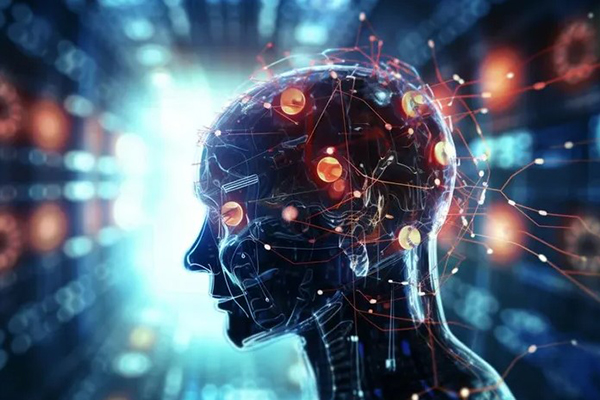Brain-computer interface (BCI) technology represents one of the most groundbreaking innovations of the 21st century, fundamentally transforming how humans interact with digital devices and machines. This revolutionary technology creates a direct communication pathway between the brain’s electrical activity and external devices, enabling users to control computers, prosthetic limbs, wheelchairs, and other systems through thought alone.
At its core, a brain-computer interface is a device that captures neural signals from the brain, processes them through sophisticated algorithms, and translates them into actionable commands for external hardware or software. Unlike traditional input methods that require physical movement, BCIs bypass the body’s normal neuromuscular pathways, offering unprecedented possibilities for individuals with motor disabilities and neurological conditions.
The technology operates on the principle that merely imagining an action produces measurable changes in brain electrical activity. For instance, when someone thinks about moving their finger, the motor cortex generates specific neural patterns that can be detected and interpreted by BCI systems. Through machine learning and signal processing, these brain signals become digital commands that can control cursors, robotic arms, or communication devices.
The market for brain-computer interfaces has experienced explosive growth, with projections indicating the industry will triple from nearly $2 billion in 2023 to $6.2 billion by the end of the decade. This surge reflects growing recognition of BCI’s transformative potential across healthcare, rehabilitation, gaming, education, and beyond. As technology advances, BCIs are transitioning from experimental laboratory tools to practical solutions that enhance the quality of life for millions of people worldwide.
How Brain-Computer Interface Technology Works
Signal Acquisition and Processing
BCI systems operate through three fundamental components that work in harmony to translate thoughts into actions. The first stage involves signal acquisition, where specialized sensors capture brain activity through various methods. These sensors range from non-invasive electroencephalogram (EEG) electrodes placed on the scalp to invasive microelectrode arrays implanted directly into brain tissue.
The second stage focuses on signal processing, where advanced algorithms analyze and interpret the captured neural signals. This process involves filtering out noise, extracting meaningful patterns, and identifying specific brain activities that correspond to user intentions. Machine learning techniques play a crucial role in improving the accuracy and reliability of signal interpretation over time.
The final stage converts processed signals into output commands that control external devices. Whether controlling a computer cursor, operating a robotic prosthetic, or a wheelchair, the translated neural signals enable seamless interaction between human thoughts and technological systems.
Types of BCI Systems
Brain-computer interfaces are categorized into three main types based on their proximity to brain tissue. Non-invasive BCIs utilize external sensors like EEG caps to capture brain signals from outside the skull. While safer and more accessible, these systems typically offer lower signal quality and resolution compared to invasive alternatives.

Semi-invasive BCIs involve placing electrodes beneath the skull but outside the brain tissue itself, providing a middle ground between safety and signal quality. Invasive BCIs require surgical implantation of electrodes directly into brain tissue, offering the highest resolution neural data but carrying greater medical risks.
Medical Applications and Healthcare Impact
Restoring Mobility and Independence
The most transformative applications of BCI technology lie in healthcare, particularly for individuals with paralysis, spinal cord injuries, and neuromuscular disorders. BCIs enable patients to control robotic limbs, wheelchairs, and other assistive devices through neural commands, effectively restoring lost motor functions and independence.
Notable examples include the BrainGate system, which has demonstrated remarkable success in translating neural activity into movement for quadriplegic patients. Similarly, research has shown that BCIs can restore brain-controlled walking after spinal cord injury, with patients successfully operating robotic gait orthoses to regain basic ambulation.
Cognitive Enhancement and Rehabilitation
Beyond motor applications, BCIs show promise in addressing cognitive impairments associated with conditions like Alzheimer’s disease and dementia. Researchers are exploring how brain activity can be optimized and amplified to enhance memory recall and potentially prevent cognitive decline.
BCI technology also accelerates rehabilitation processes by enabling patients to control muscles they can no longer use due to neurological diseases. This approach facilitates faster recovery from injuries and helps maintain neural pathways that might otherwise deteriorate.
Future Trends and Emerging Applications
The future of brain-computer interfaces extends far beyond medical applications, with exciting developments emerging across multiple sectors. Improved performance will deliver more accurate and reliable systems with faster data processing and reduced input-output delays.
Wider applications will see BCIs integrated into gaming, entertainment, education, and sports, particularly as virtual and augmented reality technologies advance. The development of minimally invasive implants will make BCI technology more accessible while maintaining high signal quality.
Future BCIs will provide increased sensory feedback, including tactile sensations that enable more natural and intuitive interactions with digital environments. Perhaps most intriguingly, BCIs may eventually augment human capabilities, enhancing memory, learning, attention, and other cognitive functions beyond normal human limits.



